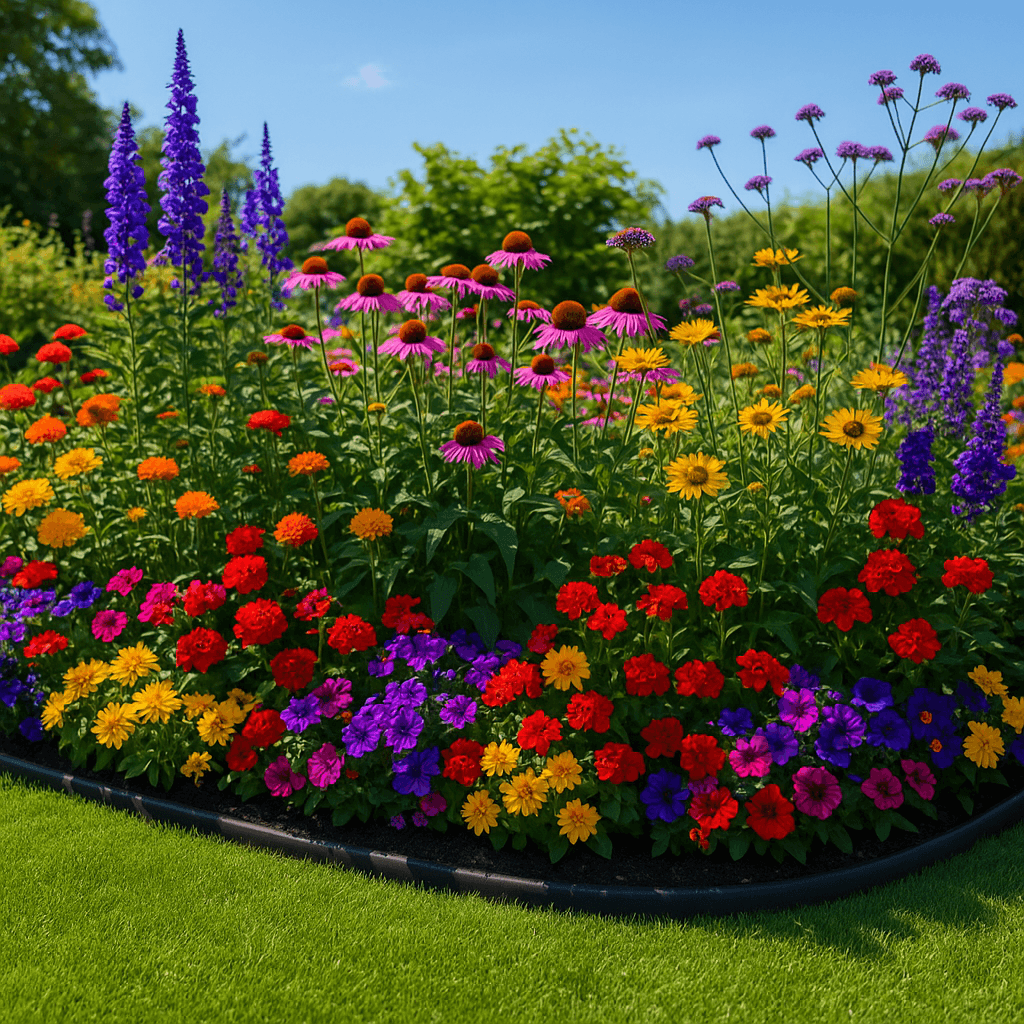One of the most common goals for gardeners at this time of year is to create a space that is filled with colourful, healthy blooms. If this is your goal, there are plenty of factors to consider. From the types of flowers you choose to the location where you plant them, planning for summer blooms can be incredibly rewarding when you get it right.
What are the considerations for planting for summer blooms?
There are a number of steps that can help you get the best from your summer plants:
- Choosing colourful bedding plants for instant impact
- Adding perennials for returning seasonal colour
- Using taller plants for added structure and height
- Following practical care tips to extend flowering
Choosing bedding plants for summer blooms
Bedding plants are the quickest way to add instant colour to your garden. Sold ready to plant after the last frost (typically late May in the UK), they’ll reward you with vibrant displays all summer long.
Popular choices include petunias, geraniums, marigolds, and lobelias. Regular deadheading will keep them flowering for months. Trailing varieties like lobelia or begonias work beautifully in hanging baskets and window boxes, spilling over the sides to create a lush, cascading effect.
Choosing perennials for lasting colour
Perennials return year after year and, with clever selection, can ensure colour from early summer to autumn. For early blooms, try salvia ‘Caradonna’, geums, or iris. Mid-to-late summer showstoppers include echinacea, rudbeckia, and coreopsis — all of which also attract bees and butterflies.
Adding height for dramatic effect
Taller plants like delphiniums, foxgloves, or verbena bonariensis add vertical interest and work well behind shorter bedding plants. Ornamental grasses such as stipa tenuissima or pennisetum can break up colour blocks and introduce movement to your planting scheme.
Extra Tips to Boost Blooms & Extend Flower Life
- Deadhead regularly: Removing spent flowers directs energy back into producing more blooms.
- Feed wisely: Use a potassium-rich fertiliser (such as tomato feed) every 2–3 weeks to encourage prolonged flowering.
- Pinch out growth tips: On some plants like sweet peas and fuchsias, pinching out the top shoots encourages bushier growth and more flowers.
- Mulch to lock in moisture: A layer of organic mulch helps retain water, regulate soil temperature, and reduce weed growth.
- Water deeply at the base: Water early morning or late evening to minimise evaporation and avoid wetting leaves, which can lead to fungal issues. Check your water supplier before using a hose in case of restrictions.
- Stagger planting: Plant in phases so that as one wave of blooms fades, the next is coming into colour.
Best Flowers for Summer Gardens
Here’s a list of reliable, colourful summer bloomers suitable for UK gardens:
- Petunias
- Geraniums (Pelargoniums)
- Marigolds (Tagetes)
- Lobelia
- Begonias
- Cosmos
- Zinnias
- Rudbeckia
- Echinacea (Coneflower)
- Coreopsis
- Salvia
- Verbena bonariensis
Check Your Garden Edging
To keep your garden looking its best all season, pay attention to your edging. Quality garden border products don’t just enhance visual appeal — they help prevent weed spread, protect moisture levels, and stop soil erosion around plant roots.
FlexiBorder is made from recycled tyres, making it durable, weatherproof, UV-resistant, and flexible enough to bend up to 70 degrees. It’s safe for children and pets, and quick to install, making it the ideal choice for keeping your summer blooms healthy and your garden neat.
-

Brown FlexiBorder
£34.99 – £759.99Price range: £34.99 through £759.99 Select options This product has multiple variants. The options may be chosen on the product page -

Grey Flexiborder
£34.99 – £759.99Price range: £34.99 through £759.99 Select options This product has multiple variants. The options may be chosen on the product page -

Sage FlexiBorder
£34.99 – £759.99Price range: £34.99 through £759.99 Select options This product has multiple variants. The options may be chosen on the product page -

Green FlexiBorder
£34.99 – £759.99Price range: £34.99 through £759.99 Select options This product has multiple variants. The options may be chosen on the product page -

Black FlexiBorder
£34.99 – £759.99Price range: £34.99 through £759.99 Select options This product has multiple variants. The options may be chosen on the product page -

FlexiBorder Inside Corner Box of 2 Sage
£35.99 Add to basket -

Sage Spare Pegs
£3.95 Add to basket -

FlexiBorder Outside Corner Box of 2 Black
£35.99 Add to basket


